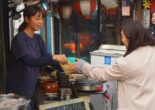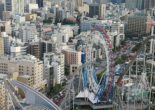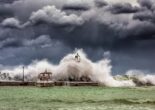The Romancecar trains to Hakone are the most sybaritic way of getting to the resort town. But there are three different train options that are cheaper, and in one case even more comfortable. Well, at least much faster.
Read on here to find out more.
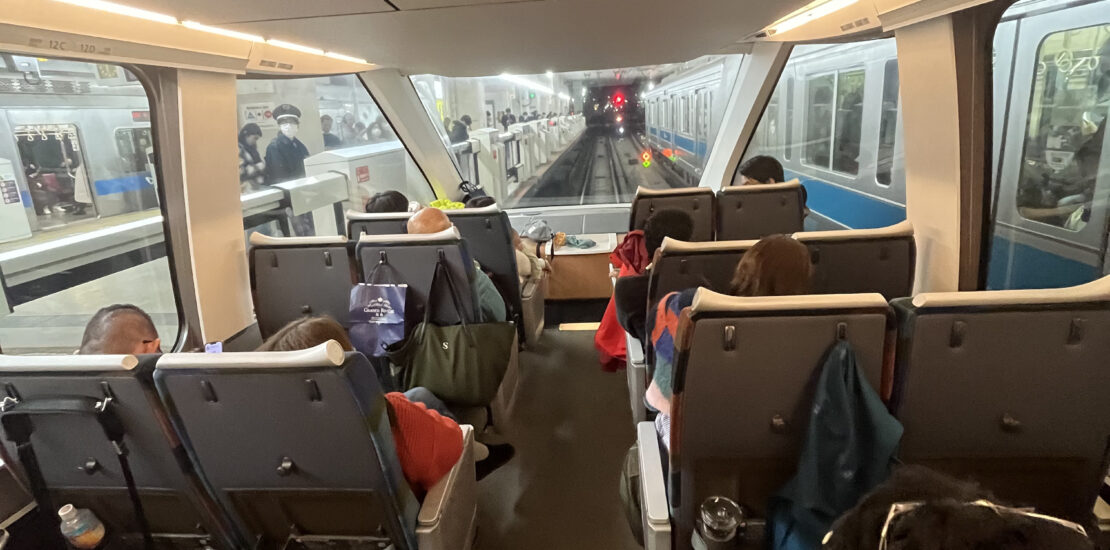
Taking The Train To Hakone
If you want to get away from the hustle of Tokyo for a day and cool your head in the mountains, you could do worse than going to Hakone. Not only is it in the mountains, but there are also several rightly famous museums in the villages up the mountain, plus some legendary sybaritical onsen ryokan. And as a bonus, you can take a ride on a pirate ship. With unparalleled views of Mt Fuji.
Hakone has been a resort destination for more than a hundred years, but before the onsen hotels and the pirate ships on the lake, this was a military outpost protecting Edo, the name of the shogun’s capital before the Emperor moved there and changed the name to Tokyo.
Meiji era tourists
It did not take long into the Meiji era after Japan had modernized and opened up the country to domestic as well as foreign travelers, for tourists to flock to Hakone. While there was no longer a need to cut a few kilometers off the arduous walk from Tokyo to Kyoto, the hot springs provided their attraction.
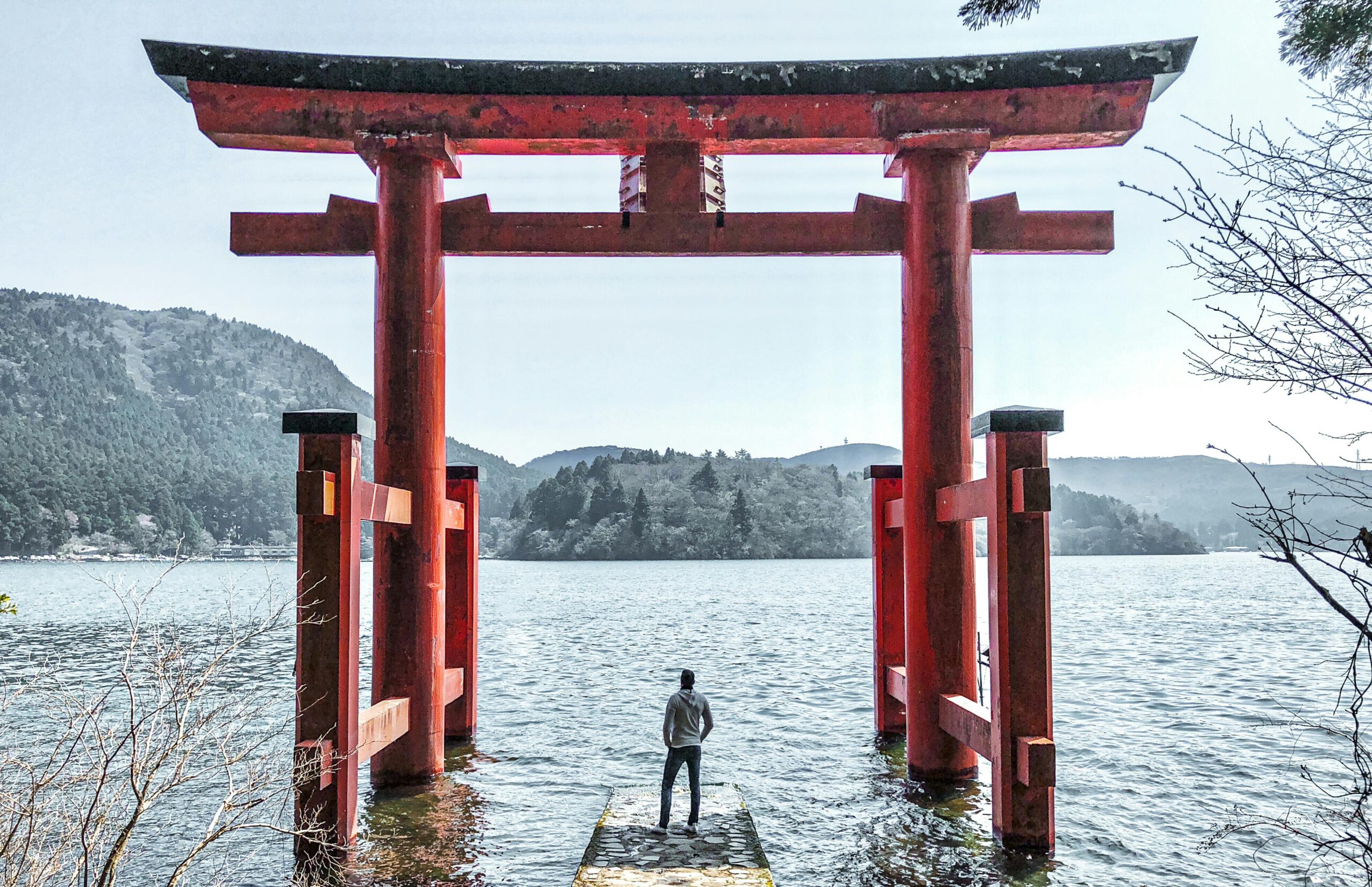
Today, there is a small museum next to the lake, but it is hardly one of the major attractions of the resort. Hakone has developed from a village with a few ryokan catering to Tokyoites looking for relaxation to an international destination for those who want to experience a slice of Japan.
Hakone is not just one village, however. It is part of the Fuji-Hakone National Park. The park comprises both mountains, which are linked geologically as well. The Hakone Mountain is an active volcano, even if the eruptions today only consist of noxious gases and hot water – so hot that you can boil eggs in it, which become black thanks to the sulfur in the water. Mt Fuji, of course also a volcano, is no longer active – even if the last eruption was only a little more than 200 years ago.
The volcano ropeway
To get to the top of the volcano in Hakone, you take the ropeway from Gora, which is halfway up the mountain. The Hakone Tozan railway winds its way up the mountain’s slopes, the specially built engine pulling the little train up the slope. It looks more like a tram than a train but when it finally pulls into the terminus at Gora, the passengers feel more like they had gone to a rollercoaster in an amusement park than an old relaxation village.

But how do you get to the Hakone Tozan railway? It is much less complicated than many other train trips around Tokyo, and some of the options are worth the trip in themselves.
Mountain railway only
The Hakone Tozan railway starts in Odawara, which is an ancient castle town south of Tokyo. Where the purpose of the Hakone garrison was to protect the road to Edo against any invading insurgents arriving over the mountain pass (and keep track of travelers passing through), the castle in Odawara was a regular fiefdom under the shogun.
The city, like so many others in Japan, was burned down during the Second World War. The castle on site today is a replica, but well worth a visit for the feeling of what life may have been here for the local samurai during the Edo era, watching the travelers on the Tokaido road on their way to Kyoto, Osaka, and beyond.
Four options from Tokyo
The trains, however, arrive at the modern train station. If you are coming from Tokyo, there are four options: taking the Shinkansen, taking the local JR train, taking the local Odakyu train, and taking the Odakyu Romancecar.
The local JR trains from Tokyo to Odawara belong to the JR Tokaido Line, which runs from Atami to Tokyo. Thanks to these trains connecting to the Ueno-Tokyo Line, it is possible to take the same local train from Utsunomiya in Tochigi to Takasaki in Gunma to Odawara (and Atami). If you plan to travel that kind of distance, a green car ticket is highly recommended. It also makes sense to avoid traveling through Tokyo in the morning on your way to Odawara on the JR local trains, unless you travel on a weekend. The rush hour in the morning on weekdays is still a fact of life on Japanese trains, especially in the Tokyo area. Try traveling after 10 AM, when chances are much better that you will get somewhere to sit.
This train is an ordinary local train, and it will take 1.5 hours and frequent stops to go to Odawara, and the views do not open up until you have passed Yokohama.
The other local train
The other local train you can take is the Odakyu local train. JR, Japan Railways (formally East Japan Railways) is the Japanese national railway company, and runs trains all across Japan, including the Shinkansen. Odakyu Line, by contrast, is a local railway operator running trains between Tokyo and several destinations to the south and southwest of the city. Since the railway uses narrow gauge tracks, the trains can not run on the JR or Tokyo Subway tracks, like some other railway companies.
It takes 1 hour 31 minutes to go to Odawara from Shinjuku with the Odakyu line local train, slightly faster if you catch an express or limited express train. The journey is not all that different from the trip on the JR local train, following a slightly different route. You will not see or experience anything remarkable either way, save for the occasional glimpse of Mt Fuji.
Fast as the Shinkansen
If you are taking the Shinkansen, it takes only 33 minutes. The fastest service, Nozomi, does not stop in Odawara. But the Tokaido Shinkansen line, which you need to take from Tokyo, has a train every ten minutes – more frequently during heavy traffic periods. And the comfort of the Shinkansen is legendary.

Even in economy class, you do not feel the speed, even if the trains barely have started to accelerate for real before they have to start braking to be able to stop in Odawara. As usual, Japanese trains stop where the door is going to open – within the millimeter.
The most exciting, and also most comfortable, way of getting to Hakone from Shinjuku with the Odakyu line is to take the Romancecar. Especially if you manage to get a seat in the panorama section.
Limited romance express
The Romancecar is a limited express service (which means it is an express train that stops at a limited number of stations). The trains also go a station further than Odawara, stopping in Hakone-Yumoto. But that is not what makes the Romancecar service remarkable. It is the trains themselves.

The Romancecar service was one of the first purely recreational train services to run out of Tokyo after the Second World War. The name comes from a revolutionary feature of the first Romancecar trains: couple seats.
Until then, the train seating, at least in trains with two-by-two seat multiple combinations, had been strictly one seat – armrest – next seat. By removing the armrest, and making the back of the seat slightly higher to give some privacy, the Odakyu line designers created a train where couples could cuddle up together. To understand how revolutionary the idea was, consider that at the time, wives were supposed to walk a few steps behind their husbands when going out. Public intimacy was even more rarely expressed than now.
Front of train seats
The most remarkable feature of today’s Romancecar is a group of seats in front of the train, where you can enjoy a 180-degree view of the onrushing landscape. No driver is obstructing the view, because she is sitting in a bubble above the front passenger’s head. The rest of the seats are comfortable enough, but it is the front (and rear) panorama sections that are the main attractions.

Thanks to this, booking tickets can be a problem. Attractive times tend to be fully booked months in advance. The website of Odakyu Line is very helpful in providing instructions, especially in English, for those who are looking to get a seat on the most interesting train that can take them to Hakone.

